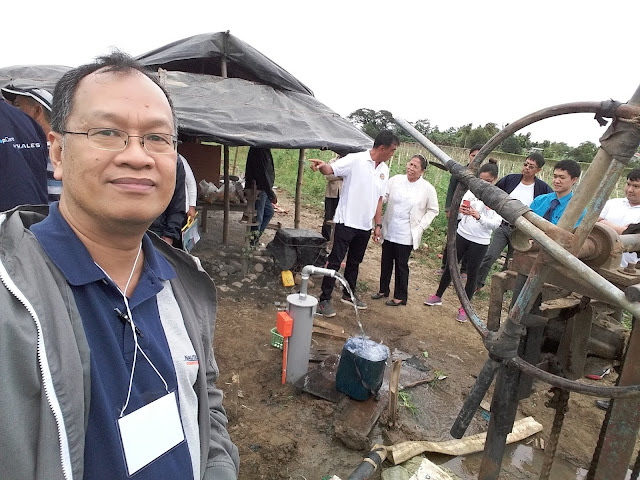The Department of Agrarian Reform Provincial
Office of Cagayan-Batanes (DARPO Cagayan-Batanes) has provided funds thru its DAR Central Office, for the construction
of the initial three (3) solar pump irrigation system in Cagayan province with
technology provided by the Department of Agriculture-Bureau of Soil and Water
Management (DA-BSWM). The project costs approximately P877,500.00 per site.
The Solar Pump Irrigation System project will provide solar panels and control accessories that will generate solar energy. Submersible water pumps will draw water from an underground source into concrete water tanks as storage, and the water from the storage tank shall flow into the vegetable farms through pipes.
The Solar Pump Irrigation System project will provide solar panels and control accessories that will generate solar energy. Submersible water pumps will draw water from an underground source into concrete water tanks as storage, and the water from the storage tank shall flow into the vegetable farms through pipes.
The three pilot sites for the solar
pump irrigation systems are located in Agrarian Reform Communities (ARCs),
specfically: (1) San Esteban Farmers Cooperative in the Eastern Alcala Agrarian
Reform Community (Eastern Alcala ARC) in the municipality of Alcala; (2)
Lasvinag Multi-Purpose Cooperative in the Lasvinag Agrarian Reform Community
(Lasvinag ARC) in the municipality of Gattaran; and (3) Nabbotuan Multi-Purpose
Cooperative in the Furaban Agrarian Reform Community (Furaban ARC) in the
municipality of Solana.
On December 18, 2017, an Operation
and Maintenance Seminar was conducted to prepare the Agrarian Reform
Beneficiaries Organizations (ARBO) members to be able to properly operate and
maintain the facilities with a site visit to familiarize the participants with the system.
The Solar Pump Irrigation System resolves
the vegetable farmers’ water supply challenges specially with today’s
devastating effects of climate change. When operational, they can utilize the
systems to provide water to irrigate their vegetable farms, household water supply,
livestock raising, etc. The construction of solar pump irrigation systems in the pilot sites are expected to be completed by the end of January 2018 and will be turned over to the ARBO immediately after completion.
 |
| Solar panels provide energy to run the water pumps in vegetable farms with no access to electricity. |
 |
| A training on the operation and maintenance was conducted for the recipient-operators of the project. |
 |
| Members of the three ARBO-recipients of the project in Cagayan undergo training on operation and maintenance. |
 |
| Unlimited water for vegetable farmers through the solar pump (submersible) irrigation system. |





























